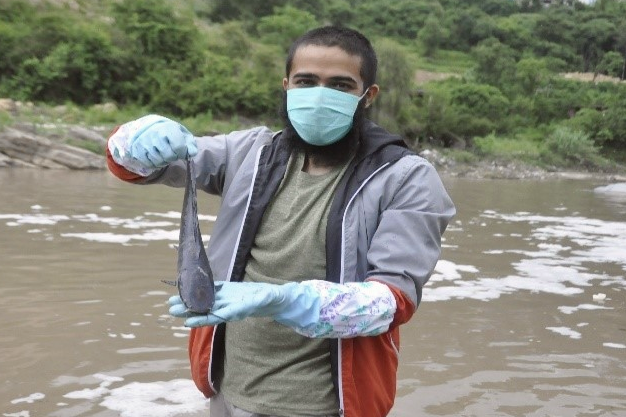LVDI International and its partner, Green Guard, recently assisted the Division Forest Office of Hattisar – Kathmandu in a study of the Bagmati River ecosystem. Originating at Bagdwar in Shivapuri Hills about three miles north of Kathmandu Valley, the Bagmati River is a lifeline for 3.5 million people living in the Kathmandu, Bhaktapur and Latipur districts. Once considered a holy river, the Bagmati and its tributaries have become increasingly polluted due to high-density human settlements along the banks coupled with inadequate waste management. To help prioritize cleanup efforts and devise scientifically sound restoration strategies for the Kathmandu district, Mr. Bishwanath Rijal (Nepal Program Coordinator) and local freshwater ecologists led a team of students from Amrit Science College and Kathmandu Forestry College to assess the water quality and associated aquatic fauna at six locations (Sundarijal, Gokarna, Tilganga, Sankhamul, Teku, and Chobhar) during March-June, 2020.


Not surprisingly, our team observed a variety of solid waste in and along the river, and our water quality and sediment tests showed that the Bagmati River is extremely polluted, particularly in downstream areas past Sundarijal. One of the best indicators of the river’s health is the amount of dissolved oxygen (DO) in the water. We found that during the pre-monsoon months the average DO levels were alarmingly low, ranging from 6.6 mg/l in Sundarijal to only 1.7 mg/l in Teku (see table below). Most fish species cannot live when the DO level falls below 6.5 mg/l and few, if at all, can survive below 4.0 mg/l. The paucity or absence of fish in the various river sections corresponds with our DO measurements at those locations. A report detailing our study has been submitted to the Division Forest Office, and our results will be integrated into the Bagmati River monitoring database.

Given the unhealthy condition of the river, all stakeholders must come together to fix this human generated problem. Beyond the government improving the waste management systems, cleanup campaigns led by local communities are crucial for promoting people’s environmental awareness as well as eliminating waste from entering the river. The Bagmati River is a symbol of purity and the cradle of the Kathmandu Valley civilization. Everyone can and should do his/her part to revive Nepal’s holy river.



